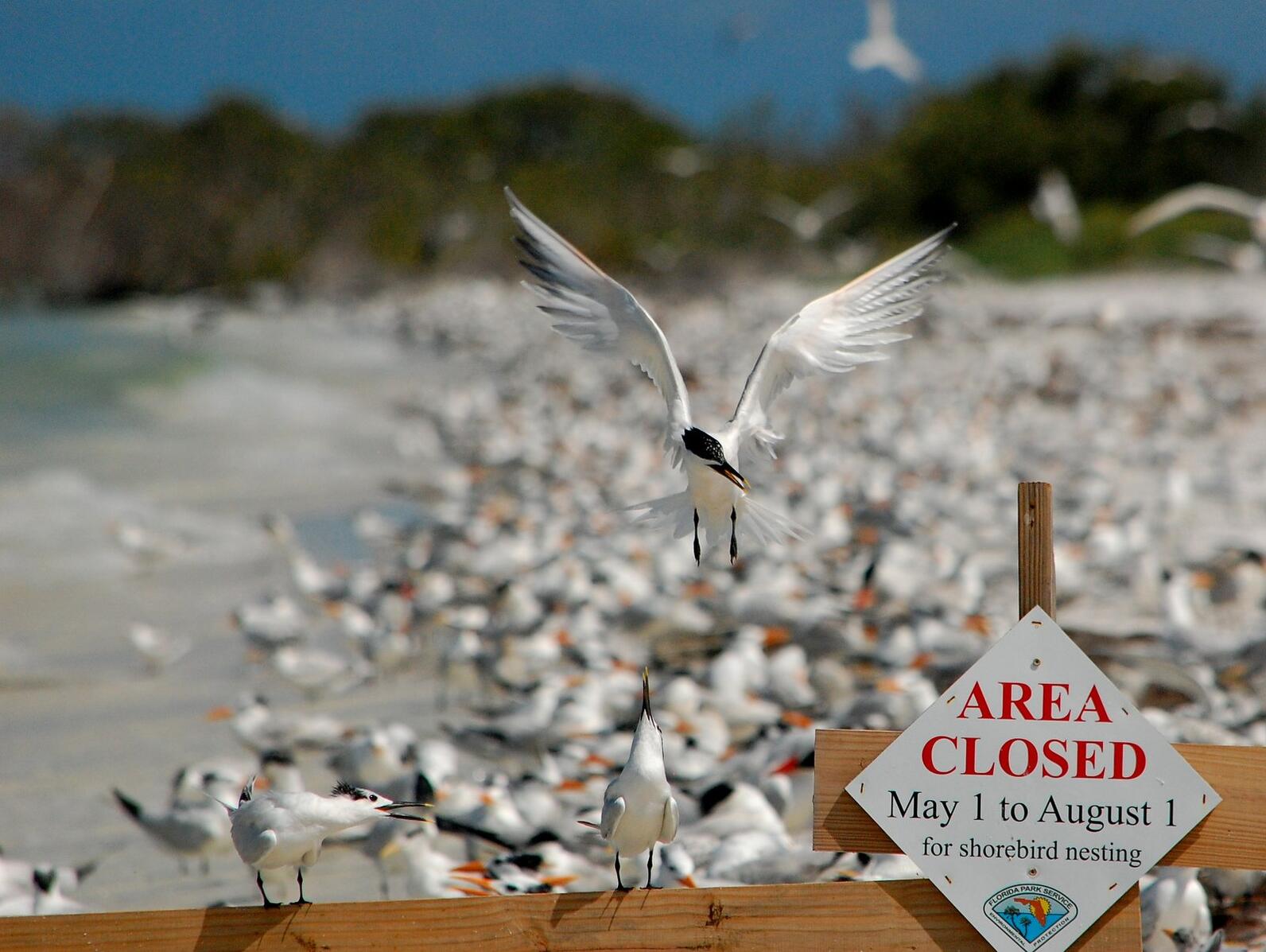Clear blue water beneath me, the steady hum of the Yamaha motor at my back, and up ahead a white sand island is teeming with thousands of terns, gulls, ibis, and the iconic Black Skimmers. After hundreds of hours spent on Three Rooker Island, I find the sounds of cackling birds soothing, the sights of their rich personal interactions entrancing. This is a bird biologist’s paradise.
As the Stewardship Coordinator of Three Rooker Island this summer, I’ve experienced the humble privilege of having time to spend in a wild place. Enough time to learn the physical intricacies of the island: its tidal patterns, the robust vegetation rooting the sand in place, the way the wind funnels along the edges. Enough time to really know the resident nesting birds - to watch them raise families, navigate foraging beyond red tide waters, quarrel, play, defend themselves fiercely, survive extreme weather and loss, and, on rare occasion, I’ve even been able to catch their brief moments of relaxation. The treasure of this wildlife experience is matched only by the invaluable fortune that is my volunteer crew of Audubon Florida Shorebird Stewards. These relentlessly passionate individuals of all ages are wildlife enthusiasts, tenacious in their commitment to protecting the birds all summer long; that heart & soul is something money can’t buy.

It seems odd that these wild bird species, that have already been resilient through past centuries of hunting, disease, and weather, would need protection by Stewards. The truth is, these birds do need protection - specifically, from other people and their pets.
In the summertime, Three Rooker Island is home to thousands of nesting seabirds, shorebirds, and wading birds, including imperiled Black Skimmers, American Oystercatchers, and Reddish Egrets. As a barrier island with no fresh water, this island is unique in providing a sanctuary away from mammalian predators like raccoons and coyotes. It should be a slam-dunk for breeding success. However, the thousands of boaters visiting Three Rooker every summer severely limit the birds’ space and breeding progress. Simultaneously, sea level rise driven by climate change is shrinking the island as a whole.
When humans and wild species are in close proximity, disturbance is difficult to avoid. Two days after the storm surge from Hurricane Elsa drowned Black Skimmer chicks and eggs, my heart sank watching young children and their dogs blissfully running through the remaining colony of utterly exhausted birds, terrifying them into chaos. The adult birds skyrocketed up for survival while their flightless chicks aimlessly ran toward danger. I know that those kids didn’t know better, but education takes time, and time is running out.

The seasonal signage on Three Rooker Island that attempts to protect seabird colonies from disturbance is spatially limited and not yet wholly effective. If we could increase our reach to ensure safety for brooding birds and chicks in all nesting and resting spots on the island, breeding success would increase. Three Rooker could become a bulwark in keeping these imperiled birds safe from extinction, and enjoyed by tourists and locals alike throughout the rest of the year.
I am so grateful to Audubon Florida for recognizing that these Suncoast Shorebirds are resilient, ecologically vital, and simply charming beings that are worthy of protection. It has been an absolute honor to play a role in their conservation. I hope to never know a world devoid of the triumphant sights and sounds of a successful seabird nesting colony.








